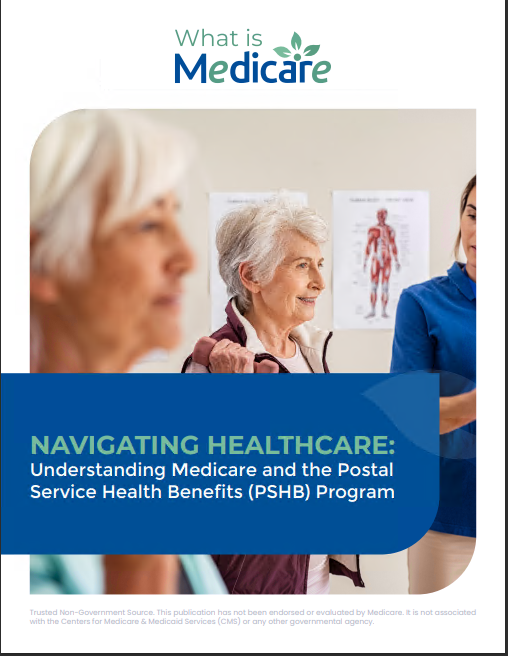Key Takeaways
- Understanding the different parts of Medicare can help you make informed decisions about your healthcare coverage.
- Navigating the Medicare enrollment process is easier when you know the steps and options available to you.
New to Medicare? Let’s Explore Your Options and Benefits Together
Medicare can seem overwhelming at first, but understanding the basics can help you feel more confident in your healthcare decisions. This guide will walk you through what Medicare is, the different parts of Medicare, when you should enroll, your coverage options, and tips for making the most of your benefits.
What is Medicare Anyway?
Medicare is a federal health insurance program primarily for people aged 65 and older, although certain younger people with disabilities and those with End-Stage Renal Disease also qualify. It’s designed to help cover the cost of healthcare, including hospital stays, doctor visits, and prescription drugs. Understanding Medicare’s structure and benefits can help you make better healthcare decisions and ensure you have the coverage you need.
Breaking Down Medicare Parts: A, B, C, and D
Medicare is divided into four parts, each offering different types of coverage:
Medicare Part A: Hospital Insurance
Part A covers inpatient hospital stays, care in a skilled nursing facility, hospice care, and some home health care. Most people don’t pay a premium for Part A because they or their spouse paid Medicare taxes while working.
Medicare Part B: Medical Insurance
Part B covers certain doctors’ services, outpatient care, medical supplies, and preventive services. Unlike Part A, most people pay a monthly premium for Part B. This part of Medicare helps cover essential services like visits to your primary care doctor, specialists, and other outpatient services.
Medicare Part C: Medicare Advantage Plans
Medicare Advantage Plans are an alternative to Original Medicare (Parts A and B) and are offered by private insurance companies approved by Medicare. These plans provide all of your Part A and Part B coverage and may include extra benefits like vision, hearing, dental, and prescription drug coverage. Enrollment in a Medicare Advantage Plan requires that you are first enrolled in both Parts A and B.
Medicare Part D: Prescription Drug Coverage
Part D adds prescription drug coverage to Original Medicare, some Medicare Cost Plans, some Medicare Private-Fee-for-Service Plans, and Medicare Medical Savings Account Plans. These plans are offered by insurance companies and other private companies approved by Medicare.
When Should You Enroll in Medicare?
The timing of your Medicare enrollment is crucial to avoid penalties and ensure you have the coverage you need when you need it. Here are the key enrollment periods:
Initial Enrollment Period (IEP)
The IEP is a seven-month period that starts three months before the month you turn 65, includes your birthday month, and ends three months after your birthday month. This is the best time to enroll in Medicare to avoid any late enrollment penalties.
General Enrollment Period (GEP)
If you miss your IEP, you can sign up during the GEP, which runs from January 1 to March 31 each year. Coverage will begin on July 1 of the same year, but you may have to pay a higher premium for late enrollment.
Special Enrollment Period (SEP)
You may qualify for a SEP if you or your spouse is still working and you have health coverage through your employer or union. The SEP allows you to enroll in Medicare without penalty after your IEP has ended.
What Are Your Coverage Options?
Choosing the right Medicare coverage depends on your individual healthcare needs, preferences, and budget. Here’s a closer look at your options:
Original Medicare (Parts A and B)
Original Medicare includes Part A and Part B and allows you to visit any doctor or hospital that accepts Medicare. You pay a fee for each service, and Medicare pays a portion of the cost.
Medicare Advantage Plans (Part C)
These plans offer an alternative to Original Medicare and often include additional benefits like vision, dental, and prescription drug coverage. Medicare Advantage Plans usually have network restrictions, meaning you may need to use doctors and hospitals that are in the plan’s network.
Medicare Supplement Insurance (Medigap)
Medigap policies are sold by private companies to help pay some of the healthcare costs that Original Medicare doesn’t cover, such as copayments, coinsurance, and deductibles. Medigap plans are standardized, meaning they offer the same basic benefits no matter which company sells them, but costs can vary.
Prescription Drug Plans (Part D)
If you have Original Medicare, you can add prescription drug coverage by enrolling in a Part D plan. These plans vary in cost and the drugs they cover, so it’s important to choose a plan that fits your medication needs.
How to Choose the Right Plan for You
Selecting the best Medicare plan for your needs involves considering several factors, including your healthcare needs, budget, and preferences. Here are some tips to help you make an informed decision:
Assess Your Healthcare Needs
Consider the types of healthcare services you use regularly. Do you see specialists often? Do you take prescription medications? Your answers will help determine whether Original Medicare, a Medicare Advantage Plan, or a combination of plans will best meet your needs.
Compare Costs
Look at the total cost of each plan, including premiums, deductibles, copayments, and coinsurance. Keep in mind that while some plans may have lower premiums, they might have higher out-of-pocket costs.
Check the Plan’s Network
If you choose a Medicare Advantage Plan, make sure your preferred doctors and hospitals are in the plan’s network. Also, consider the plan’s rules for seeing specialists and getting referrals.
Review the Plan’s Drug Coverage
If you take prescription medications, make sure the plan you’re considering covers your drugs. Check the plan’s formulary (list of covered drugs) and any restrictions or requirements for getting your medications.
Navigating the Medicare Enrollment Process
Enrolling in Medicare involves several steps, but knowing what to expect can make the process smoother. Here’s a step-by-step guide:
Step 1: Determine Your Eligibility
Most people become eligible for Medicare at age 65. However, you may qualify earlier if you have certain disabilities or conditions.
Step 2: Gather Your Information
Before enrolling, gather important documents such as your Social Security card, birth certificate, and any other documentation that proves your eligibility.
Step 3: Enroll in Medicare
You can enroll in Medicare online, by phone, or in person at your local Social Security office. If you’re already receiving Social Security benefits, you’ll be automatically enrolled in Part A and Part B.
Step 4: Choose Your Coverage
Decide whether you want Original Medicare or a Medicare Advantage Plan. If you choose Original Medicare, consider whether you need a Part D plan for prescription drug coverage and a Medigap policy to help with out-of-pocket costs.
Step 5: Review and Confirm
Once you’ve chosen your coverage, review your plan details and confirm your enrollment. You’ll receive a Medicare card and welcome packet with more information about your coverage.
Tips for Maximizing Your Medicare Benefits
Making the most of your Medicare benefits involves staying informed and proactive about your healthcare. Here are some tips to help you maximize your benefits:
Stay Up-to-Date with Preventive Services
Medicare covers many preventive services at no cost to you, including screenings, vaccines, and annual wellness visits. Taking advantage of these services can help you stay healthy and catch any potential health issues early.
Understand Your Out-of-Pocket Costs
Even with Medicare, you may still have out-of-pocket costs. Understanding your deductibles, copayments, and coinsurance can help you budget for your healthcare expenses.
Use Medicare’s Online Tools
Medicare offers several online tools to help you manage your coverage and find providers. The Medicare Plan Finder can help you compare plans, while the “Your Medicare Coverage” tool provides detailed information about what’s covered.
Keep Track of Your Medical Records
Maintaining accurate medical records can help ensure you receive the best care. Keep copies of your medical history, medications, and any treatments you’ve received.
Common Medicare Questions Answered
Navigating Medicare can raise many questions. Here are answers to some common ones:
How Do I Know if My Doctor Accepts Medicare?
Most doctors accept Medicare, but it’s always best to check. You can ask your doctor directly or use Medicare’s online provider search tool.
What If I Need Help Paying for Medicare?
If you have limited income and resources, you may qualify for programs that help pay for Medicare costs, such as Medicaid, Medicare Savings Programs, or Extra Help with prescription drug costs.
Can I Change My Medicare Plan?
Yes, you can change your Medicare plan during the Annual Enrollment Period (October 15 to December 7) or if you qualify for a Special Enrollment Period.
What Should I Do if I Lose My Medicare Card?
If you lose your Medicare card, you can request a replacement online through the Social Security website, by phone, or by visiting your local Social Security office.
Taking the Next Step
Exploring your Medicare options and benefits is an essential step in securing your healthcare coverage. By understanding the different parts of Medicare, knowing when to enroll, and choosing the right coverage, you can make informed decisions that best suit your needs.
Contact Information:
Email: [email protected]
Phone: 2675558901









